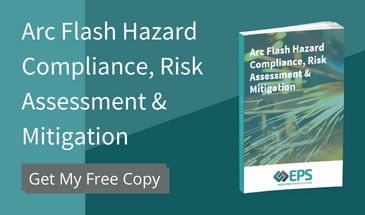Arc flash hazard as defined by NFPA 70E:
“a dangerous condition associated with the release of energy by an electric arc”
Broken down to its components, we get:
Arc: current flowing through air, caused either by human error or faulty equipment
Flash: release of energy, including a bright flash of light
Hazard: the danger posed to personnel in the vicinity of the arc
Equipment and work methods are designed and used to separate personnel from live conducting parts by barriers and well-maintained equipment has a very low chance of spontaneously causing electric arcs. As such, arc flash incidents are rare.
When they do occur, most often changes are made to the system through switching or work in the vicinity of live conducting parts. These are moments when personnel are likely to be in the electrical room or even working at the switchgear where an arc flash occurs. Arc flash therefore poses a hazard to personnel due to the nature of the causes.
Air has very poor electrical conductance, so it is not easy to establish a current through it. In most electrical systems, it is used as the main form of insulation. If, however, through voltage spikes or falling equipment, a temporary flashover does occur, it is possible that the arcing current is sustained. A sustained arcing current leads to the hazardous release of energy in various ways:
- Radiation: a flash of light due to high temperature (up to 20,000 °C)
- Metal vapor: at the striking point, the metal (copper or aluminum) of electrical conductors quickly evaporates
- Blast wave: metal vapor expands in an explosive fashion, causing a pressure wave and turning any loose parts into projectiles
To assess the hazard levels, reduce them where possible, and select the proper protective equipment, an arc flash hazard analysis can be performed.
Arc Flash Video by Westex (Click here)










